The image of the Church as a field hospital for sinners – while not exhaustive – draws us back to something essential. “Healing” and “saving” are the same word in Greek, so there is an important meditation to be had on the the overlapping meanings. Christ does not come to heal or save merely as a gesture of superiority or magnanimity. Christ comes to heal and save the one(s) he loves as a spouse. It challenges our faith to consider that the one who created us has such lofty plans for a relationship with us. His actions of healing and saving are expressions of his devotedness – He wants to restore what may seem to worldly eyes to have been lost, defiled, worthless, etc. As a devoted husband only has eyes for his wife, Christ only has eyes for us. And as Christ sees our brokenness, our sicknesses, our weakness, our sin, He rushes in to repair. We must believe and trust that His level of commitment is excessive and that none of our wretchedness deters Him from His mission. He does not fear contamination, nor can He be crushed by the weight of our guilt. Let us fearlessly see ourselves as we are, and humbly touch Him in faith.
PETER CHRYSOLOGUS:
A betrothed woman was chosen, so that Christ’s church might already be symbolically indicated as bride, according to the words of the prophet Hosea: “I will make you my bride in justice and right; I will make you my bride in mercy and benevolence, and I will espouse you in fidelity.” Thus John says, “He who has a bride is the bridegroom.” And blessed Paul: “I have promised you to one bridegroom, to present you to Christ as a chaste virgin.” She is truly a bride who regenerates the new infancy of Christ by a virginal birth.1
“hem of his garment:”
Whereas Mark 5:27 has simply “garment,” Matt 9:20 (and Luke 8:44 perhaps) adds the term kraspedon, which refers to the edge or border of a garment. Given the Jewish environment of Matthew, the word may have described the fringes or tassels worn at the edge of one’s garment in accord with Num 15:38–39; Deut 22:12. See Matt 23:5 for a reference to such tassels worn by Pharisees.2
“has healed you:”
Matthew omits the description of the healing and the search for the one who touched Jesus’ garment (Mark 5:29–33). Instead his summary revolves around the word sōzō, which can mean “heal” and “save”: “I will be healed” (v. 21), “Your faith has healed you” (v. 22), and “the woman was healed” (v. 22). While the primary healing was physical, the spiritual aspect of healing (salvation) is also present.3
“he saw the flute-players:”
Since he said in 9:18 that the girl was already dead, Matthew could omit the message about her death (Mark 5:35–37). Matthew added the note about the presence of the flute-players: “Even the poorest in Israel must not furnish less than two flutes and one woman wailer (at the funeral of his wife)” (m. Ketub. 4:4). The presence of the flute-players confirms that the girl already died.4
On his way there, a woman suffering hemorrhages for twelve years seeks to touch Jesus to access his healing power. Her ailment may be a menstrual disorder that resulted not only in physical discomfort but also social isolation. According to Lev 15:19–33, anyone who touched a person with a hemorrhage became ritually unclean. From a Jewish standpoint, her stealthily touching Christ’s tassel on his cloak6 would have been disturbing, for according to the law this would make Jesus ritually unclean. From Jesus’ perspective, however, this woman exhibited great faith. He looks at her tenderly and says, Courage, daughter! Your faith has saved you. Jesus tells her that it was in response to her faith that he instantly cured her. As in his healing of the leper (8:1–4), instead of Jesus being defiled by the woman’s uncleanness, his divine power transforms her condition. She is healed physically of her ailment, which in turn restores her socially as she is made ritually clean.5
Footnotes
- SERMON 146. Ferreiro, A. (2003). Introduction to the Twelve Prophets. In A. Ferreiro (Ed.), The Twelve Prophets (p. 12). Downers Grove, IL: InterVarsity Press.
- Harrington, D. J. (2007). The Gospel of Matthew. (D. J. Harrington, Ed.) (Vol. 1, p. 131). Collegeville, MN: Liturgical Press.
- Harrington, D. J. (2007). The Gospel of Matthew. (D. J. Harrington, Ed.) (Vol. 1, p. 131). Collegeville, MN: Liturgical Press.
- Harrington, D. J. (2007). The Gospel of Matthew. (D. J. Harrington, Ed.) (Vol. 1, pp. 131–132). Collegeville, MN: Liturgical Press.
- Mitch, C., & Sri, E. (2010). The Gospel of Matthew (p. 136). Grand Rapids, MI: Baker Academic.

